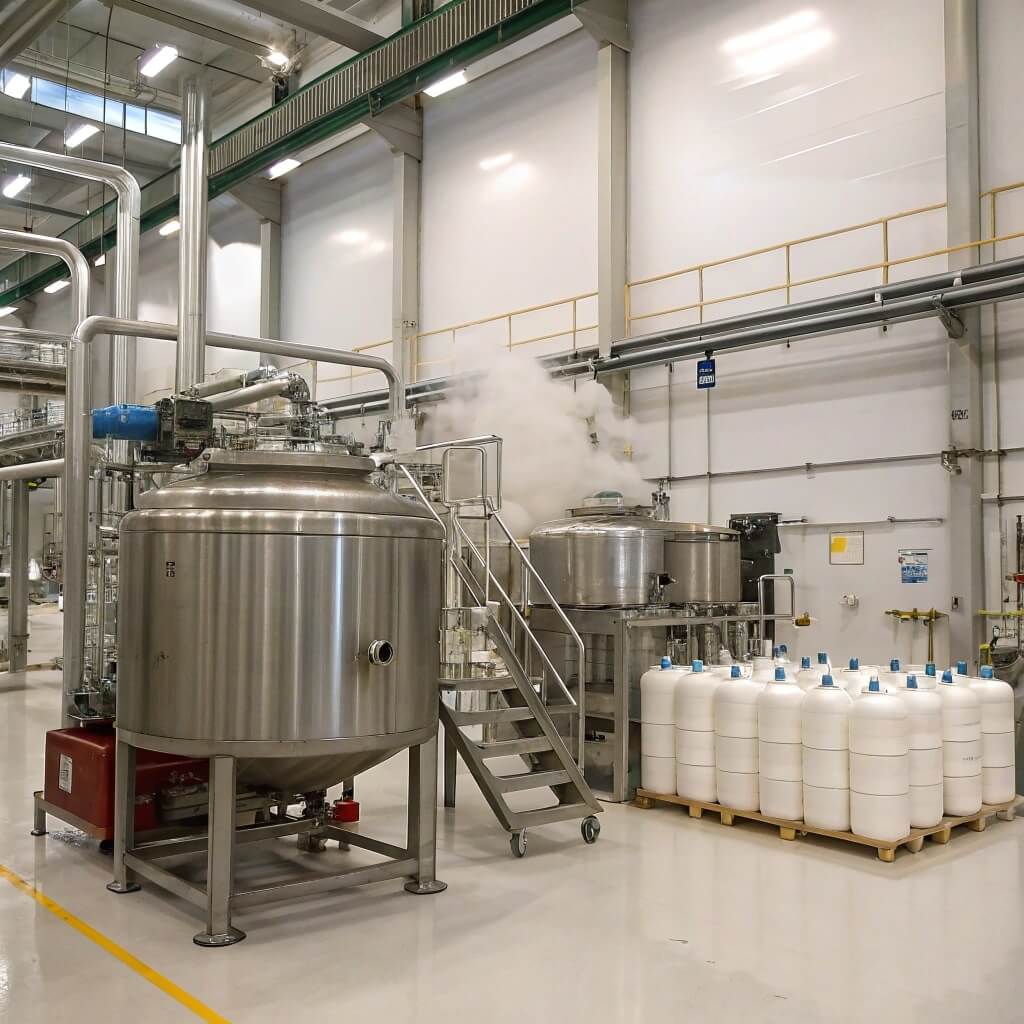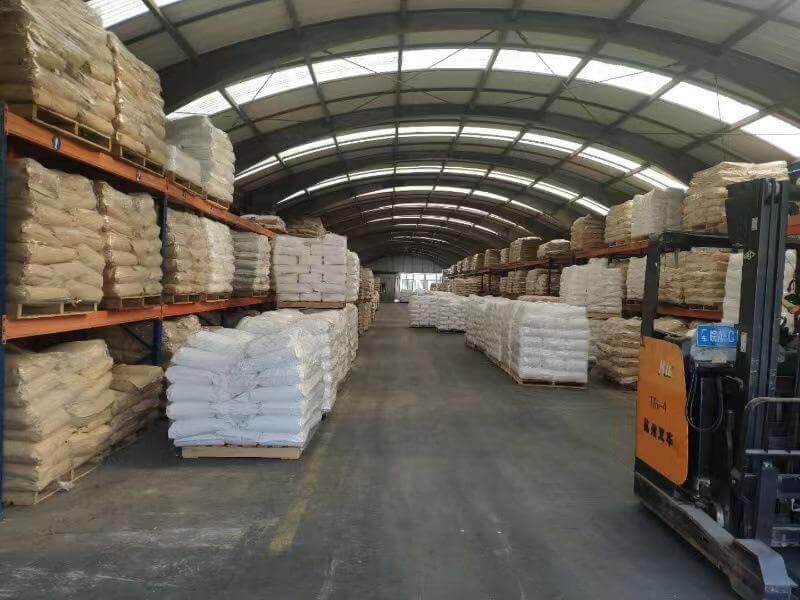HPMC K4M is a critical polymer used across many industries. It is particularly important in pharmaceuticals, construction, and food. However, understanding its behavior, especially how its viscosity impacts solubility, presents a common challenge. Inconsistent dissolution can lead to product failures, wasted materials, and significant production delays. This directly affects your bottom line and product quality. This article explains the relationship between HPMC K4M viscosity and solubility. It provides practical insights to help you optimize its use. We will cover its properties, measurement methods, influencing factors, and strategies for effective application.

1. What is Hydroxypropyl Methylcellulose K4M?
Hydroxypropyl Methylcellulose (HPMC) K4M is a cellulose ether. It comes from cellulose, a natural polymer found in plant cell walls. Manufacturers chemically modify cellulose to create HPMC. This modification involves adding hydroxypropyl and methoxy groups. These groups give HPMC its unique properties. The ‘K4M’ designation refers to a specific grade. This grade has a nominal viscosity of 4,000 mPa·s for a 2% solution at 20°C. This makes it suitable for many uses. Here’s why it matters… This specific viscosity range is crucial for its performance in various applications.
HPMC K4M finds wide use in many industries. In pharmaceuticals, it acts as a binder, disintegrant, and film-forming agent. It is also a sustained-release matrix former. This means it controls how quickly a drug releases from a tablet. In construction, it improves water retention and workability in cement and gypsum-based products. It also acts as a thickener and stabilizer in food products. Its versatility makes it a valuable ingredient.
| Property | Description |
|---|---|
| Chemical Structure | Cellulose backbone with hydroxypropyl and methoxy groups |
| Appearance | White to off-white powder |
| Solubility | Soluble in cold water, insoluble in hot water and organic solvents |
| Viscosity (2% solution) | Approximately 4,000 mPa·s at 20°C |
| pH Stability | Stable over a wide pH range (3-11) |
2. How is Viscosity Measured in HPMC K4M Solutions?
Viscosity is a measure of a fluid’s resistance to flow. Think of honey versus water. Honey is more viscous. For HPMC K4M solutions, viscosity is a key property. It directly impacts how the material behaves. The unit for viscosity is typically millipascal-seconds (mPa·s) or centipoise (cP). These units are equivalent. Accurate measurement is vital for quality control. It also helps in predicting performance.
Several methods measure viscosity. The Brookfield viscometer is a common tool. It works by rotating a spindle in the fluid. The resistance to rotation indicates viscosity. Other methods include capillary viscometers and falling ball viscometers. Each method has its advantages. They also have specific applications. But here’s the thing… The choice of method depends on the fluid’s properties and the desired accuracy. Standardized procedures ensure consistent results.
Factors influence viscosity measurements. Temperature is a major factor. Viscosity decreases as temperature rises. Shear rate also plays a role. HPMC solutions are often shear-thinning. This means their viscosity drops under increasing shear. Concentration of the HPMC is another key factor. Higher concentrations lead to higher viscosities. Proper control of these variables is crucial for reliable data.
| Measurement Method | Principle | Application |
|---|---|---|
| Brookfield Viscometer | Rotational resistance of a spindle | General purpose, wide range of viscosities |
| Capillary Viscometer | Flow time through a narrow tube | Low viscosity fluids, precise measurements |
| Falling Ball Viscometer | Time for a ball to fall through fluid | Transparent Newtonian fluids |
3. What Factors Influence HPMC K4M Viscosity?
Many factors affect the viscosity of HPMC K4M solutions. The concentration of HPMC K4M is the most direct factor. Higher concentrations mean more polymer chains in solution. These chains interact more, increasing resistance to flow. This results in a higher viscosity. This relationship is often non-linear. Small changes in concentration can lead to large viscosity shifts.
Temperature significantly impacts viscosity. As temperature increases, the kinetic energy of molecules rises. This reduces intermolecular forces. The polymer chains move more freely. This leads to a decrease in viscosity. Conversely, lower temperatures cause an increase in viscosity. Controlling temperature during processing is therefore critical. Now, you might be wondering… How does molecular weight fit into this picture? Molecular weight and the degree of substitution also play a big role.
HPMC K4M has a specific molecular weight. Higher molecular weight polymers have longer chains. These longer chains create more entanglement in solution. This leads to higher viscosity. The degree of substitution (DS) refers to the average number of hydroxyl groups replaced by methoxy or hydroxypropyl groups. DS affects the polymer’s hydrophilicity. This impacts its interaction with water. This, in turn, influences viscosity.
Other excipients or solutes can also affect viscosity. Salts, for example, can screen charges on the polymer. This changes its conformation. This can either increase or decrease viscosity. The presence of other polymers can also lead to complex interactions. These interactions can significantly alter the solution’s rheology. Careful formulation considers all these factors.
| Factor | Impact on Viscosity | Notes |
|---|---|---|
| Concentration | Directly proportional | Higher concentration = higher viscosity |
| Temperature | Inversely proportional | Higher temperature = lower viscosity |
| Molecular Weight | Directly proportional | Higher molecular weight = higher viscosity |
| Degree of Substitution | Varies | Affects hydrophilicity and chain interaction |
| Other Excipients | Variable | Can increase or decrease depending on interaction |
4. How Does HPMC K4M Dissolve in Solvents?
Solubility refers to the ability of a substance to dissolve in a solvent. When HPMC K4M dissolves, its polymer chains disperse evenly throughout the solvent. This forms a homogeneous solution. The process involves breaking intermolecular bonds within the HPMC. It also involves forming new bonds with the solvent molecules. This is a critical step for its functionality. Understanding this process helps in proper formulation.
The dissolution of HPMC K4M is a complex process. It involves several stages. First, the HPMC particles must be wetted by the solvent. Then, the solvent penetrates the polymer matrix. This causes the polymer to swell. Finally, the swollen polymer chains disentangle and disperse. Hydrogen bonding plays a significant role here. HPMC has many hydroxyl groups. These groups can form hydrogen bonds with water molecules. This interaction drives the dissolution process. Let me explain… The strength of these interactions determines how well HPMC dissolves.
Factors affect the dissolution rate. Particle size is one such factor. Smaller particles have a larger surface area. This allows for faster wetting and solvent penetration. Agitation also speeds up dissolution. Stirring helps to disperse the particles. It also brings fresh solvent into contact with the polymer. The temperature of the solvent also matters. Higher temperatures generally increase dissolution rates. This is because molecular motion increases. This helps to break bonds and promote dispersion.
| Stage of Dissolution | Description |
|---|---|
| Wetting | Solvent contacts and wets the HPMC particles |
| Swelling | Solvent penetrates the polymer matrix, causing it to expand |
| Disentanglement | Polymer chains separate and disperse into the solvent |
5. What Affects HPMC K4M Solubility?
Several factors influence the solubility of HPMC K4M. Temperature is a key factor. HPMC K4M exhibits inverse thermal gelation. This means it is more soluble in cold water. Its solubility decreases as temperature increases. At a certain temperature, known as the gelation temperature, the solution can form a gel. This property is useful in some applications. However, it can be a challenge in others. Careful temperature control is therefore essential.
pH also affects solubility. HPMC K4M is non-ionic. This means its solubility is generally stable over a wide pH range. However, extreme pH values can affect its stability. This can lead to degradation over time. Solvent type and polarity are also important. HPMC K4M is primarily water-soluble. It is insoluble in most organic solvents. The presence of co-solvents can sometimes alter its solubility. This can be useful for specific formulations. This is important because… understanding these solvent interactions helps in choosing the right medium.
Particle size and surface area impact solubility. Smaller particles dissolve faster. They offer more surface area for solvent interaction. Larger particles take longer to wet and dissolve. The manufacturing process of HPMC K4M controls particle size. This directly affects its dissolution properties. Impact of processing conditions also matters. How HPMC K4M is handled and stored can affect its solubility. Moisture content, for example, can influence its ability to disperse. Proper storage conditions are therefore vital.
| Factor | Impact on Solubility | Notes |
|---|---|---|
| Temperature | Inverse thermal gelation | More soluble in cold water |
| pH | Generally stable | Extreme pH can cause degradation |
| Solvent Type | Primarily water-soluble | Insoluble in most organic solvents |
| Particle Size | Directly proportional to dissolution rate | Smaller particles dissolve faster |
| Processing Conditions | Can affect dispersion and hydration | Proper storage is key |
6. How Does Viscosity Directly Impact HPMC K4M Solubility?
The viscosity of an HPMC K4M solution directly affects its solubility. High viscosity can hinder the dissolution process. When HPMC K4M is added to a solvent, it first needs to be wetted. Then, the solvent must penetrate the polymer particles. If the solution becomes highly viscous too quickly, it can form a thick, gel-like layer around the undissolved particles. This layer acts as a barrier. It prevents further solvent penetration. This slows down or even stops the dissolution process. This can lead to incomplete hydration. Here’s the deal… This barrier effect is a common challenge in formulation.
Polymer chain entanglement also plays a role. In highly viscous solutions, the HPMC polymer chains are tightly entangled. This makes it difficult for individual chains to separate and disperse into the solvent. The solvent molecules struggle to break apart these entangled networks. This results in a slower dissolution rate. This is particularly true for high molecular weight HPMC grades. These grades naturally form more entangled solutions. This requires careful consideration during formulation.
Practical implications for formulation development are significant. If HPMC K4M does not dissolve completely, it can lead to inconsistencies. This affects product performance. For example, in pharmaceuticals, incomplete dissolution can alter drug release profiles. In construction, it can lead to poor workability or reduced strength. Formulators must balance the desired viscosity with effective dissolution. This often involves optimizing mixing conditions. It also means controlling the rate of HPMC addition. These steps help ensure proper hydration.
| Viscosity Level | Impact on Solubility | Resulting Challenges |
|---|---|---|
| Low | Faster wetting and penetration | May not achieve desired thickening |
| Moderate | Balanced dissolution and thickening | Ideal for many applications |
| High | Hindered solvent penetration | Incomplete dissolution, lumping |
7. What are the Challenges of High Viscosity on Solubility?
High viscosity presents several challenges for HPMC K4M solubility. One major issue is the formation of lumps. When HPMC K4M powder is added to a solvent, the outer layer of particles hydrates rapidly. This forms a sticky, gel-like coating. This coating then prevents water from reaching the inner core of the powder. This results in dry, undissolved lumps. These lumps are difficult to break apart. They can lead to non-uniform solutions. This affects product quality and consistency. Proper dispersion techniques are therefore essential.
Another challenge is prolonged dissolution times. The gel layer formed by high viscosity significantly slows down the hydration process. This means it takes much longer for the HPMC K4M to fully dissolve. This can impact production efficiency. It also increases processing costs. In some cases, the HPMC may never fully dissolve. This leaves undissolved particles in the final product. This can compromise its performance. Want to know the secret? Effective mixing and dispersion methods can mitigate these issues.
Strategies exist to overcome high viscosity challenges. One approach is to pre-disperse the HPMC K4M in a non-solvent. This could be a small amount of alcohol or glycerin. This prevents immediate hydration and lumping. Another strategy involves adding the HPMC K4M slowly to vigorously stirred water. This ensures that each particle is wetted individually. Using hot water initially can also help. HPMC K4M is less soluble in hot water. This allows for better dispersion before cooling. Cooling then promotes full dissolution. These methods help achieve a homogeneous solution.
| Challenge | Description | Solution Strategy |
|---|---|---|
| Lumping | Rapid hydration of outer particles forms sticky gel, preventing inner core dissolution | Pre-disperse in non-solvent, add slowly to agitated water |
| Prolonged Dissolution | Gel layer slows hydration, increasing dissolution time | Use hot water initially, then cool for full dissolution |
| Incomplete Hydration | Undissolved particles remain, compromising product performance | Optimize mixing, control addition rate |
8. How Can You Optimize HPMC K4M Viscosity and Solubility?
Optimizing HPMC K4M viscosity and solubility is crucial for product performance. Adjusting the concentration is a primary method. A higher concentration generally yields higher viscosity. However, it can also lead to dissolution challenges. Finding the right balance is key. Molecular weight also plays a role. Different grades of HPMC K4M have varying molecular weights. Selecting the appropriate grade can help achieve desired viscosity. This also ensures good solubility. Consider the specific application requirements.
Controlling temperature and mixing conditions is vital. As discussed, temperature affects both viscosity and solubility. Dissolving HPMC K4M in cold water first can aid dispersion. Then, slowly raising the temperature can help achieve the final desired viscosity. Vigorous mixing during addition prevents lumping. It also promotes uniform hydration. Proper agitation ensures that all particles are exposed to the solvent. This leads to a homogeneous solution. The bottom line? Precise control over these parameters is essential for consistent results.
Using co-solvents or processing aids can also help. Some formulations benefit from the addition of small amounts of co-solvents. These can improve dispersion. They can also modify the hydration rate. Processing aids, such as anti-caking agents, can prevent particle agglomeration. This improves flowability. It also enhances dissolution. These additives can be particularly useful for challenging formulations. They help to overcome inherent limitations.
Best practices for achieving desired properties involve a systematic approach. Start with small-scale trials. This helps to determine the optimal HPMC K4M concentration. It also helps to identify the best mixing procedure. Monitor viscosity and dissolution rates throughout the process. Adjust parameters as needed. Document all changes and their effects. This iterative process leads to robust and reliable formulations. It ensures consistent product quality.
| Optimization Strategy | Description | Benefit |
|---|---|---|
| Adjust Concentration | Vary HPMC K4M amount | Controls final viscosity |
| Control Temperature | Use cold water for initial dispersion, then adjust | Aids dissolution, prevents lumping |
| Optimize Mixing | Vigorous agitation during addition | Ensures uniform hydration |
| Use Co-solvents | Add small amounts of compatible solvents | Improves dispersion, modifies hydration |
| Use Processing Aids | Add anti-caking agents | Prevents agglomeration, enhances dissolution |
Conclusion
Understanding the interplay between HPMC K4M viscosity and solubility is vital for successful product development. We have covered its fundamental properties, precise measurement techniques, and the various factors that influence its behavior. We also explored the challenges posed by high viscosity on dissolution and effective strategies to overcome them. By carefully controlling concentration, temperature, and mixing, you can achieve consistent and predictable results. This leads to superior product quality and streamlined production processes. We at Morton provide tailored solutions and expert guidance to help you master HPMC K4M applications. Contact Morton today to discuss your specific formulation needs and optimize your product performance. We are ready to partner with you for your next project.
FAQ
Q1: What is the primary use of HPMC K4M in pharmaceuticals?
HPMC K4M is primarily used as a sustained-release matrix former in oral solid dosage forms. It controls drug release over an extended period.
Q2: Does temperature significantly impact HPMC K4M viscosity?
Yes, temperature greatly affects HPMC K4M viscosity. Viscosity decreases as temperature increases due to increased molecular motion.
Q3: Can HPMC K4M be dissolved in organic solvents?
HPMC K4M is primarily soluble in water. Its solubility in organic solvents is limited and depends on the specific solvent and degree of substitution.
Q4: Why is uniform dispersion important for HPMC K4M?
Uniform dispersion ensures proper hydration and prevents the formation of lumps. This leads to consistent viscosity and solubility in the final solution.
Q5: How does molecular weight relate to HPMC K4M viscosity?
Higher molecular weight HPMC K4M typically results in higher solution viscosity. Longer polymer chains create more entanglement in solution.




